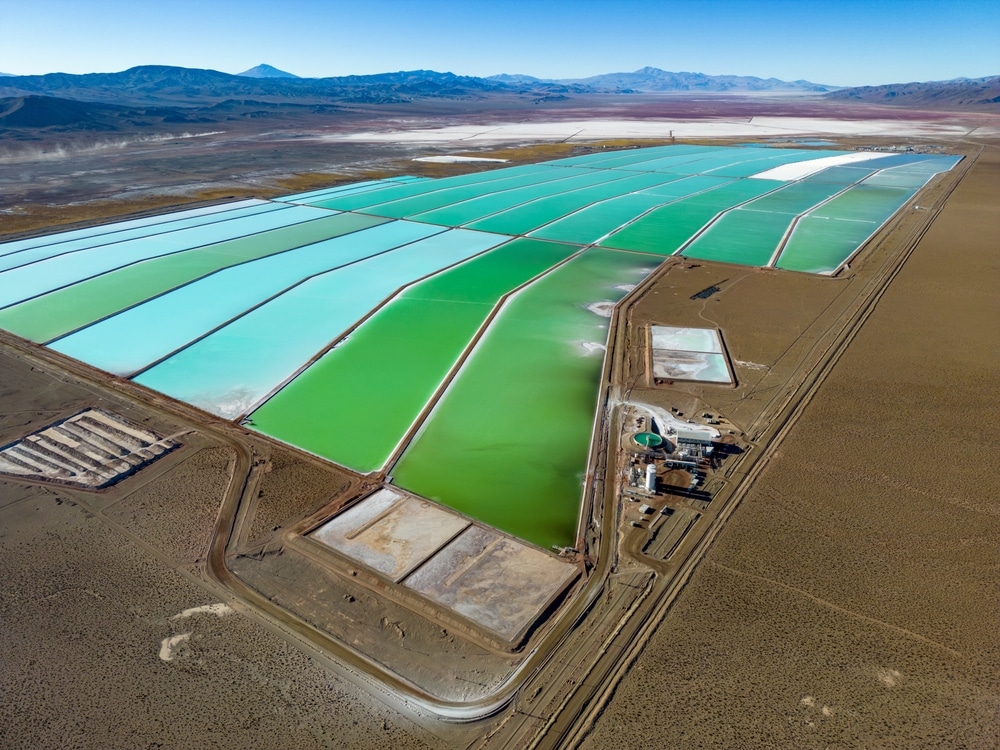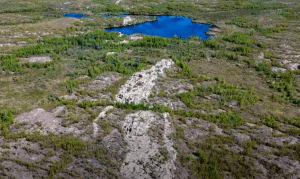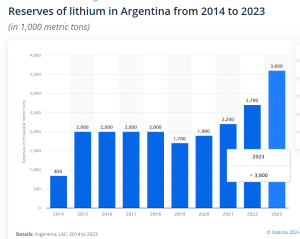Disseminated on behalf of Li-FT Power Ltd
As countries ramp up decarbonization efforts, the demand for critical minerals like lithium and copper continues to surge. Recent developments in the U.S. and Argentina, two major players in the critical minerals space, highlight the strategic importance of securing reliable supplies to meet the rising global demand for clean energy solutions.
A MESSAGE FROM Li-FT POWER LTD.
This content was reviewed and approved by Li-FT Power Ltd. and is being disseminated on behalf of CarbonCredits.com.
2 Million Tons of Lithium-Rich Spodumene Literally At The Surface
Did you know the United States is locked in a high-stakes battle with China for control over the global lithium supply chain? And yet the current downturn in lithium is the perfect time to invest before the market catches on. Why Li-FT Power? Its one of the fastest developing North American lithium juniors is Li-FT Power Ltd (TXSV: LIFT | OTCQX: LIFFF | FRA: WS0) with a flagship Yellowknife Lithium project located in the Northwest Territories.
Learn more -> https://carboncredits.com/liftpower-lift/
#lithium #liftpower #spodumenepegmatites #lithiumgrades #electricvehicles #carboncredits
A Lithium Boom in Q2 2024
The US has seen a significant increase in the import of lithium and critical minerals during the second quarter of 2024, as these materials are crucial for electric vehicles (EVs) and other clean energy applications.
Processed lithium materials, including lithium carbonate and lithium hydroxide, rose 8.7% year-over-year, totaling 3,709 metric tons. Moreover, the import of refined lithium compounds, essential for creating cathode materials and electrolyte solutions for batteries, saw a sharp 49.2% rise to 17,122 metric tons.
Despite a slowdown in plug-in electric vehicle (PEV) sales this year, the US market continues to grow, with an expected long-term demand for lithium. Alice Yu, a senior metals analyst at S&P Global Commodity Insights, noted that passenger PEVs will account for 88.2% of lithium demand growth from 2023 to 2028. Additionally, government policies worldwide continue to push for the onshoring of PEV supply chains, reflecting strong optimism for the sector.
South American nations, particularly Chile and Argentina, were major suppliers of processed lithium to the US in Q2. Chile, a US free trade agreement (FTA) partner, supplied 61.7% of the total lithium imports, while Argentina accounted for 35%.
Argentina lacks an FTA with the U.S. but the two countries signed an agreement to strengthen critical mineral supply chains. Meanwhile Canada, as an FTA partner, supplied 9,588 metric tons of refined lithium compounds, representing 56% of US imports, with China contributing around 28%.
Argentina’s Ambitions: Lithium & Copper Giants in the Making
Argentina is rapidly positioning itself as a major player in the global lithium and copper markets. The South American nation aims to more than double mining exports by $10 billion by 2027.
Currently, the world’s 4th-largest lithium producer, Argentina holds the world’s largest lithium reserves. The Argentine government focuses on improving energy infrastructure and road connectivity to enhance metals exports. However, key lithium projects require over $8 billion in investments, while major copper initiatives need about $20 billion.
In an interview, Luis Lucero, Argentina’s Mining Secretary, emphasized the need for a skilled workforce to manage these large-scale projects.
Argentina’s lithium production is projected to soar from 43,719 metric tons in 2023 to over 261,000 metric tons by 2027. By 2028, the country is expected to surpass Chile as the largest lithium producer in South America, capturing 13.1% of global lithium production, up from 4.4% in 2023.
Lithium mine production in the country hit a record high for the same year. The same goes for its lithium reserves as shown below.
Alice Yu noted that Argentina’s favorable regulatory environment and investment opportunities attract significant interest from companies worldwide, including those in the US, China, and India.
Why Lithium Demand Isn’t Slowing Down
David Dickson, CEO of Lake Resources NL, a lithium explorer in Argentina, pointed to rising investor interest in lithium assets. For example, in April, CNGR Netherlands New Energy Technology BV acquired the Solaroz project from Lithium Energy.
Argentina’s competitive mining regulations and lower taxes compared to its neighbors in the Lithium Triangle—Chile and Bolivia—are seen as key advantages for attracting foreign investment. Argentine President Javier Milei has also introduced a tax and customs incentives package to boost the country’s domestic mining sector.
Argentina’s push to ramp up lithium production is further bolstered by recent international agreements. In August, Jose Fernandez, the US undersecretary of state for economic growth, and Argentina’s Diana Mondino signed a memorandum of understanding to strengthen cooperation on critical minerals. This deal reflects Argentina’s growing importance as a key supplier of lithium to global markets.
In the near term, Rio Tinto Group’s Rincon project is expected to be a significant contributor to Argentina’s lithium output. The company’s lithium carbonate plant, with a capacity of 3,000 metric tons of battery-grade product per year, is slated to start operations by the end of 2024.
Although Rio Tinto’s CEO, Jakob Stausholm, acknowledges risks in Argentina, he expressed optimism about opportunities in Latin America. This view is driven by the region’s robust resources and favorable regulatory environment.
How Argentina Aims to Be a Global Copper Giant
Argentina is also producing a small amount of mined copper and does not export copper ore. However, new projects could change this by 2027.
Two significant copper projects—Josemaria and Taca Taca—could start operations, with a combined capacity of over 400,000 tons/year. If these projects come online as expected, Argentina could become a major player in global copper markets.
The BHP Group and Lundin Mining are leading the charge in the Latin American nation’s copper exploration efforts. Mike Henry, CEO of BHP, highlighted the country’s potential in an August 27 call, pointing out that Argentina’s proximity to Chile—a global copper powerhouse—makes it an attractive region for copper discoveries.
“This is a rare opportunity to grow our pipeline of long-term copper options by securing access to what we consider to be one of the most significant copper discoveries globally in recent decades.”
As the country continues to develop its lithium and copper resources, Argentina could play a crucial role in meeting the world’s growing demand for clean energy materials. With global interest in these critical minerals rising, the country’s mining sector could become a key driver of international trade.




